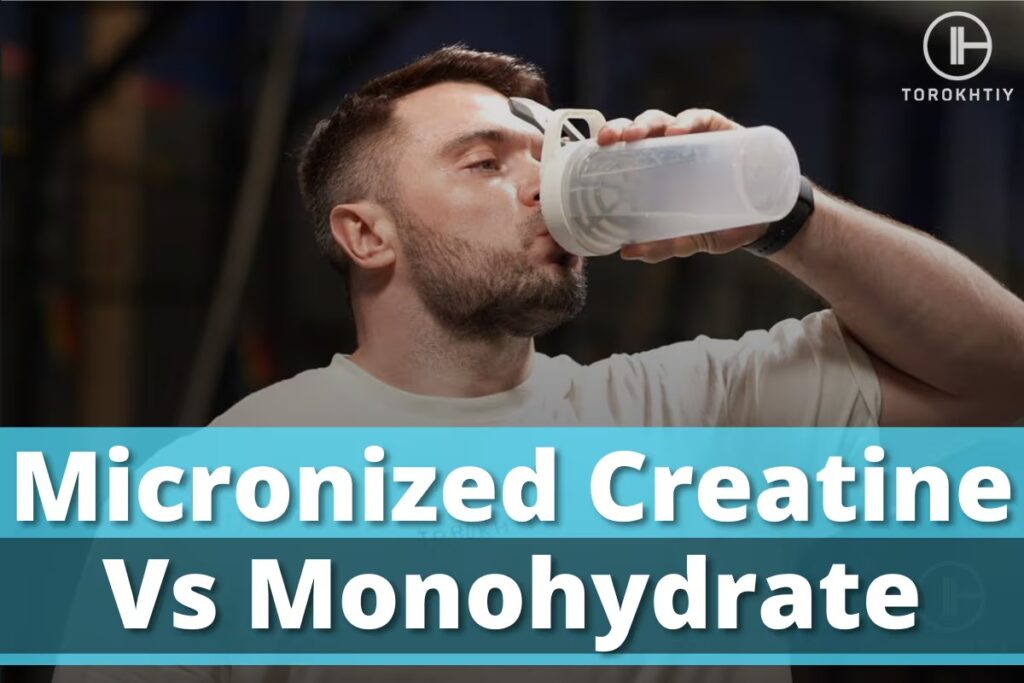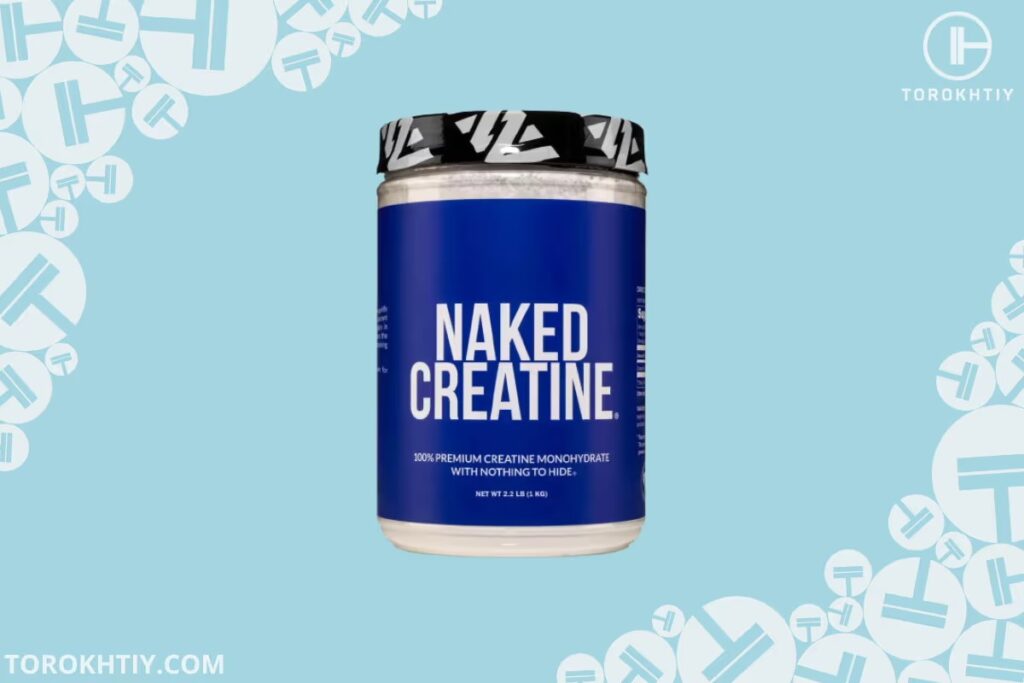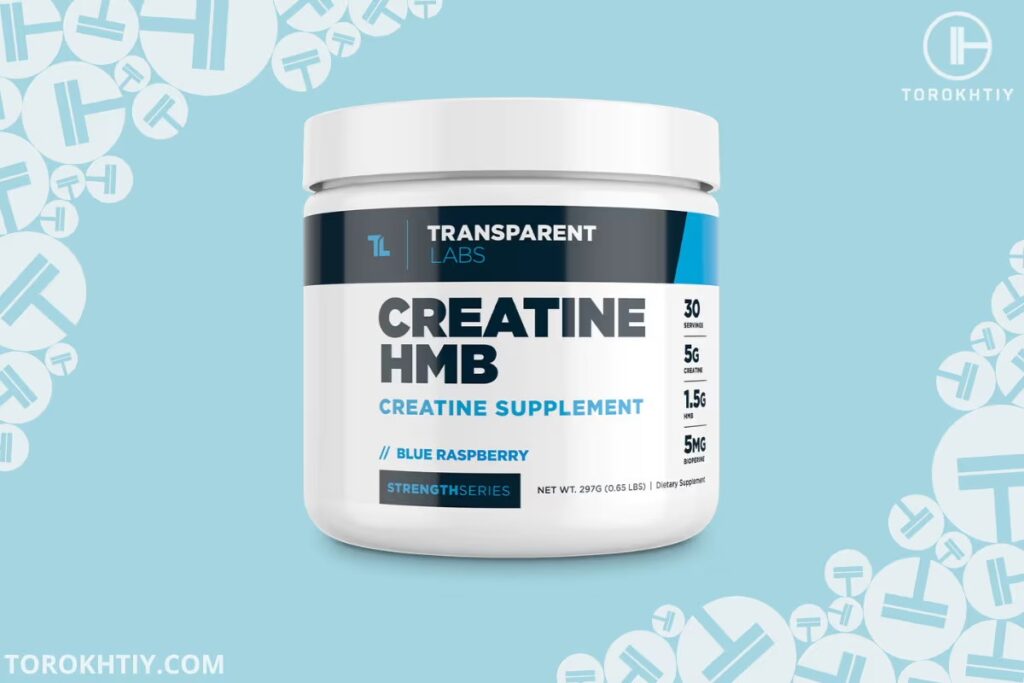Micronized Creatine vs Monohydrate: Which Is Better?
Are you confused about the difference between micronized creatine vs monohydrate? With a ton of different types of creatine on the market, it can be tough to know which is right for you. In this article we’ll be breaking down the difference between these 2 similar supplements so you can make an informed decision about which one is best.
The difference between micronized creatine vs monohydrate is very subtle. Micronized creatine is just monohydrate powder that’s been broken down into even smaller particles. This is thought to lead to better solubility and absorption, although differences are likely minimal at best.

What Is Micronized Creatine?
Micronization is a process commonly used in pharmaceuticals where a powder is broken up into smaller particles in order to increase its solubility and absorption. It is most commonly used for drugs administered in liquid that are poorly soluble. However, it has recently begun being used in supplements as well, with creatine being the main example of this. Micronized creatine is essentially basic creatine monohydrate in the form of a finer powder.
There is little evidence available that shows the difference in solubility between micronized creatine and standard monohydrate, although it likely does dissolve better based on evidence surrounding other micronized compounds. With this being said, based on evidence surrounding creatine HCL – another more soluble form of creatine – it doesn’t appear like solubility greatly affects the bioavailability of a creatine supplement.
The difference between micronized creatine monohydrate and other alternative forms of creatine like HCL is that micronized creatine is still usually monohydrate. This means it is still the best form of creatine available, in just a slightly finer form. Most micronized creatine comes at a similar price to non-micronized creatine, making these 2 products basically identical.
What Is Creatine Monohydrate?
Creatine monohydrate is the simplest, safest, and most effective form of creatine available. As mentioned above, most micronized creatine is still monohydrate, just in the form of a finer powder. It’s important to make this distinction because there are tons of alternative forms of creatine out there – Creatine HCL, Magnesium Creatine CHelate, Creatine Glutamate, etc. – that are little more than marketing schemes to charge more for the same product. Whether you’re buying regular or micronized creatine monohydrate, you’re still getting creatine in its purest, highest-quality form.
The benefits of creatine monohydrate – micronized or not – are wide-ranging and apply to virtually all athletes. These include improved high-intensity exercise performance, better recovery, and added lean body mass. You’ll experience these benefits once your muscles are fully saturated with creatine, which usually takes about 2-4 weeks with a daily dose of 3-5g.

Micronized Creatine vs Monohydrate
| Criteria | Monohydrate | Micronized Creatine |
|---|---|---|
| Source | The most researched, safest and most effective form of creatine. Also widely available and the most cost-effective option. | Most commonly micronized monohydrate. The preferred option. |
| Other forms: Creatine HCL, magnesium chelate, tri-creatine citrate, creatine pyruvate etc. There is no convincing evidence of greater efficacy and safety. | ||
| Solubility | Slightly less soluble than micronized variations, leading to a slightly grittier consistency when mixed. | More soluble than regular monohydrate based on the use of micronization across pharmacology. |
| Bioavailability & Effectiveness | Despite micronized creatine’s enhanced solubility, this does not appear to greatly affect bioavailability or effectiveness. In this regard, both supplements are virtually identical. | |
| Side Effect Risk | Although it is generally a safe supplement, it may cause stomach discomfort. | Same safety profile, but less risk of gastric discomfort (for monohydrate and most other forms of creatine). |
| Price | It does not appear that micronized creatine is any more expensive than standard monohydrate. These 2 products can easily be found for under $1 per serving. | |
1. Source
Micronized creatine is most commonly just creatine monohydrate in the form of a finer powder. This means the source of these 2 products is usually the same basic product. However, there are likely micronized versions of alternative forms of creatine – HCL, magnesium chelate, etc. – available as well. We recommend steering clear of these products and always buying monohydrate, whether or not it’s micronized won’t make much of a difference.
2. Solubility
Based on micronized drugs, it appears that micronization does improve the solubility of a powder. This means a scoop of micronized creatine will mix smoother than a scoop of standard creatine monohydrate. It’s worth noting that mixing regular creatine with warm water will also greatly improve its solubility.
Due to better solubility, micronized creatine may cause less gastrointestinal discomfort when compared with regular monohydrate. If you experience an upset stomach from standard monohydrate, taking micronized creatine can be a great alternative.

3. Bioavailability & Effectiveness
Based on studies surrounding creatine HCL, it does not appear that solubility of creatine affects its bioavailability or effectiveness. Ultimately, micronized creatine and standard monohydrate will likely have identical effects, especially once muscle stores are fully saturated.
4. Price
Finally, there doesn’t appear to be any significant difference in the price of micronized creatine or standard monohydrate. While prices vary from brand to brand, both of these supplement types can be found for well under a dollar per serving.

Micronized Creatine vs Monohydrate: Summary
Overall, creatine Monohydrate vs micronized creatine are nearly identical based on the majority of factors. Comparing the supplements on source, solubility, bioavailability, effectiveness, and price, neither type of creatine is obviously superior to the other. Whether you’re buying a micronized or standard form of monohydrate, both will provide similar effects for a similar price.
1. Pros/Cons of Micronized Creatine
Positives:
Could be better:

2. Pros/Cons of Creatine Monohydrate
Positives:
Could be better:
Micronized Creatine vs Monohydrate: When to Use Each?
Overall, virtually all athletes can benefit from the use of creatine – whether or not it is micronized. Regardless of which form of creatine you decide to take, it’s recommended that you take 3-5g daily. After 2-4 weeks of this dose, your muscles will be fully saturated, and you should begin to notice the effects of creatine. Keep in mind that it doesn’t matter when in the day you take creatine, as long as you’re taking it consistently.
Also, especially once your muscles are fully saturated, it shouldn’t matter if you miss a dose here and there. It takes 6-8 weeks after stopping supplementation for creatine levels to return to normal. So, as long as you’re taking creatine most days, your stores should remain fully saturated.
Best Micronized Creatine – Naked Creatine Monohydrate

Our choice for the best, simple micronized creatine supplement comes from Naked Nutrition.
Each serving of Naked’s creatine comes with 5g of pure monohydrate, making it the perfect dose for most people. As mentioned, this is a micronized creatine supplement which means it should have excellent solubility when mixed with water.

This is a very basic supplement, so it only contains one ingredient: creatine. As a result, this is a very budget-friendly product as well! Each serving of Naked’s creatine will only cost you around $0.21. This is especially cheap, so if you’re looking for a good budget pick, Naked’s the way to go!
Best Non-Micronized Creatine Monohydrate – Transparent Labs Creatine HMB

While Naked offers a great, simple supplement, if you’re looking for a more deluxe form of creatine, look no further than Transparent Labs Creatine HMB.
Similar to Naked, you can expect 5g of monohydrate in each serving. Because it is not micronized, this may not be as soluble as Naked’s product. However, it will still have the same core effects.
The reason this is a more deluxe product is the inclusion of extra ingredients such as Vitamin D. While you may not expect it, Vitamin D is actually an excellent supplement for muscular strength, as well as having a whole host of other health benefits including disease prevention and bone health. This supplement also contains the ingredient HMB, which does not appear to have any real effects on performance, making its inclusion here largely unnecessary.

Transparent Labs’ creatine also stands out from the crowd by coming in 11 unique flavors. Naked, and many other creatines out there only come in a single unflavored option. This makes Transparent Labs a great choice if you’re looking for a flavored creatine.
Of course, because this is a more deluxe supplement, it comes at a much higher price point than a basic product like Naked. Each serving of Creatine HMB will cost you around $1.50. Although the inclusion of HMB is unnecessary, the addition of vitamin D and the extensive flavor options still make this product a great choice.
FAQ
Is Micronized Creatine Better Than Regular Monohydrate?
There ultimately isn’t much of a difference between micronized creatine and creatine monohydrate beyond solubility. As long as you’re using creatine monohydrate, you can expect solid ergogenic effects after several weeks of consistent supplementation – whether or not it is micronized.
Which Form of Creatine Is Best?
Creatine monohydrate is undeniably the best form of creatine for being the cheapest, most effective, and most well-researched type of creatine on the market. Whether or not it is micronized will not make a difference in its effectiveness or quality.
Is Creatine Micronized Safe?
Yes, micronization is simply the process of making a powder finer for enhanced solubility. There is nothing about this process that should compromise the safety of a product like creatine.
Is Micronized Creatine the Same as Monohydrate?
Not quite. While micronized creatine is usually made from creatine monohydrate, it is in the form of a finer powder. With this being said, the only real difference between the 2 supplements is their solubility, with both having very similar prices and effects.
Conclusion
Overall, the difference between creatine monohydrate and micronized creatine is very minor. Micronized creatine is usually just creatine monohydrate in the form of a finer powder. While this increases solubility, it has few other advantages. Overall, whether you’re using regular or micronized creatine, you should experience the same effects. Just be sure you’re always buying monohydrate – micronized or not – as it is the safest, cheapest, and most effective form of creatine available.
If you’re looking for a simple micronized creatine supplement, we recommend going with Naked Creatine Monohydrate. If you’re looking for a more deluxe option that’s also non-micronized, check out Transparent Labs Creatine HMB instead.
Do you use creatine, or are you just thinking of trying it out? Do you use regular or micronized creatine? We’d love to hear in the comments below!
Also read:
- How Much Is 5 Grams of Creatine
- Can You Take Creatine With Pre Workout
- Is Creatine Bad for Teens
- Is Creatine Good for Weight Loss
- Creatine Monohydrate vs Hcl
- Will Creatine Make You Fat
- Best Time to Take Creatine
- When Does Creatine Start Working
- Does Creatine Make You Stronger
- Does Creatine Make You Gassy
References:
- Xi Han, Particle engineering via surface modification during micronization for pharmaceutical applications (New Jersey Institute of Technology, 2013), 190, http://surl.li/kydfp.
- Richard B. Kreider, Ralf Jäger, Martin Purpura, “Bioavailability, Efficacy, Safety, and Regulatory Status of Creatine and Related Compounds: A Critical Review” MDPI, https://www.mdpi.com/2072-6643/14/5/1035 (accessed Feb 8, 2022.
- Richard B Kreider, Douglas S Kalman, Jose Antonio, Tim N Ziegenfuss, Robert Wildman, Rick Collins, Darren G Candow, Susan M Kleiner, Anthony L Almada, Hector L Lopez, “International Society of Sports Nutrition position stand: safety and efficacy of creatine supplementation in exercise, sport, and medicine” National Library of Medicine, (Jun 13, 2017): 10.1186/s12970-017-0173-z.
- “Creatine” Nutrition and Physical Fitness, http://surl.li/kvqxs (accessed 2022).
- “Vitamin D” Harvard T.H. Chan, https://www.hsph.harvard.edu/nutritionsource/vitamin-d/ (accessed 2023).
- Javier Sanchez-Martinez, Alejandro Santos-Lozano, Antonio Garcia-Hermoso, Kabir P Sadarangani, Carlos Cristi-Montero, “Effects of beta-hydroxy-beta-methylbutyrate supplementation on strength and body composition in trained and competitive athletes: A meta-analysis of randomized controlled trials” National Library of Medicine, (Jul, 2018): 21(7):727-735.
Why Trust Us?
With over 20 years in Olympic Weightlifting, our team does its best to provide the audience with ultimate support and meet the needs and requirements of advanced athletes and professional lifters, as well as people who strive to open new opportunities and develop their physical capabilities with us.
By trusting the recommendations of our certified experts in coaching, nutrition, dietology, and sports training programming, as well as scientific consultants, and physiotherapists, we provide you with thorough, well-considered, and scientifically proven content. All the information given in the articles concerning workout programming, separate exercises, and athletic performance, in general, is based on verified data. We ensure that you can rely on our professionals’ pieces of advice and recommendations that can be treated as personalized ones which will benefit you and fully meet your needs.
The product testing process is described in more detail here
Author: Oleksandr Maksymenko
Certified Sports Nutritionist,
MSc Sports Dietetics
Specializing in: Weight management, Fitness / Sports nutrition
Oleksandr is a professional fitness nutritionist certified by the Fitness Professional Association (FPA). He follows the principles of evidence-based dietetics and fosters a healthy relationship with food in his clients, ensuring there are no strict prohibitions on their favorite foods or frequent lapses. His primary goal is not only to achieve results for you but also to sustain them over the long term, all while enjoying tasty and delicious food.







